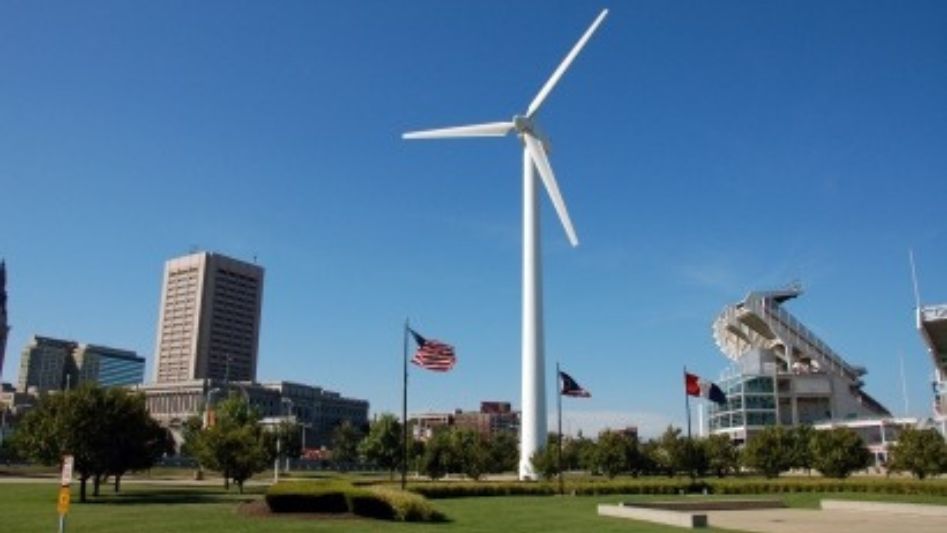Vertical Axis Wind Turbines are a unique type of wind turbine that generates electricity by harnessing the power of the wind. Unlike traditional horizontal axis wind turbines, which have a horizontal rotor and a vertical shaft, VAWTs have a vertical rotor and a horizontal shaft. This design allows for a number of benefits, particularly in urban environments where space is limited and wind patterns may be more complex.
- Introduction
- Benefits of VAWTs in urban environments
- Applications of VAWTs in urban environments
- Future potential of VAWTs in urban environments
- Conclusion
- FAQ
We invite you to read: “The Long Road to Vertical Axis Wind Turbines (VAWT)
Benefits of VAWTs in urban environments
One of the primary advantages of VAWTs is their compact size. Because they do not require a large tower to support the weight of the rotor, they can be installed in a variety of locations, including rooftops, balconies, and even walls. This makes them a great option for urban areas where space is at a premium.
VAWTs are also relatively quiet and have minimal visual impact, making them a more appealing choice for residential and commercial installations. They are able to generate electricity in low wind speeds, making them more consistent and reliable than horizontal axis wind turbines in urban environments. Additionally, VAWTs can be more effective at generating electricity in turbulent wind conditions, such as those found in urban areas.
There are a number of different applications for VAWTs in urban environments. One possibility is the installation of VAWTs on rooftops, providing a source of clean, renewable energy without taking up valuable ground space. VAWTs can also be installed on balconies, providing a convenient source of electricity for apartment dwellers. They can be mounted on walls, making them a great option for urban areas where space is limited.
VAWTs can be integrated into street lighting systems, providing a source of renewable energy for lighting and other public amenities. They can also be installed on bus shelters, providing a source of electricity for lighting and other amenities.
Applications of VAWTs in urban environments
In addition to these applications, VAWTs have the potential to be used in a variety of other settings in urban environments. For example, they could be installed on the sides of buildings or on poles in public parks. The possibilities are endless, and as the technology continues to improve and costs continue to decline, it is likely that we will see an increasing number of VAWTs being deployed in urban areas.
We invite you to read: “Are Vertical Axis Wind Turbines Really The Future?”
Future potential of VAWTs in urban environments
Overall, VAWTs have the potential to play a significant role in the transition to a more sustainable and renewable energy future, particularly in urban environments where space is limited and traditional wind turbines may not be practical. While they may not generate as much electricity as horizontal axis wind turbines, their compact size, quiet operation, and ability to generate electricity in low wind speeds make them a valuable addition to the renewable energy mix.
Conclusions:
Vertical axis wind turbines (VAWTs) are a unique and effective type of wind turbine for use in urban environments due to their compact size, quiet operation, and ability to generate electricity in low wind speeds. They can be installed on rooftops, balconies, walls, and in street lighting and bus shelter systems. As the technology improves and costs decline, we can expect to see an increasing number of VAWTs being deployed in urban areas. VAWTs have the potential to significantly contribute to the transition to renewable energy, particularly in urban areas where space is limited and traditional wind turbines may not be practical.
We invite you to read: “Vertical Axis Wind Turbines Will Dominate The Floating Offshore Wind Market”
FAQs
What are vertical axis wind turbines (VAWTs)?
VAWTs are a type of wind turbine that generates electricity by harnessing the power of the wind. They have a vertical rotor and a horizontal shaft, in contrast to traditional horizontal axis wind turbines.
What are the benefits of VAWTs in urban environments?
VAWTs have a compact size and can be installed in a variety of locations, including rooftops, balconies, and walls. They are relatively quiet and have minimal visual impact. They are also able to generate electricity in low wind speeds and are effective in turbulent wind conditions.
What are some applications of VAWTs in urban environments?
VAWTs can be installed on rooftops, balconies, walls, and in street lighting and bus shelter systems.
How do VAWTs compare to traditional wind turbines in terms of efficiency?
VAWTs may not generate as much electricity as traditional horizontal axis wind turbines, but they have a number of advantages in urban environments, such as their compact size and ability to generate electricity in low wind speeds.
Will we see more VAWTs being deployed in urban areas in the future?
As the technology improves and costs decline, it is likely that we will see an increasing number of VAWTs being deployed in urban areas.
You May Also Like
- Vertical Axis Wind Turbines. Can They Work Together?
- Offshore Wind Gets A Boost Thru The Wind Shot Program
- China Building World’s Largest Offshore Wind Farm
- What is the Next Generation Wind Technology?
- The Best Floating Multi-Turbine Technology for Wind Farms
External Links
- Vertical Axis Wind Turbine in Urban Applications
- Increasing the Power Production of Vertical-Axis Wind-Turbine Farms Using Synergistic Clustering
- Vertical Axis Wind Turbine
- A critical review of vertical axis wind turbines for urban applications
- Environmental activism and vertical-axis wind turbine preferences in California




